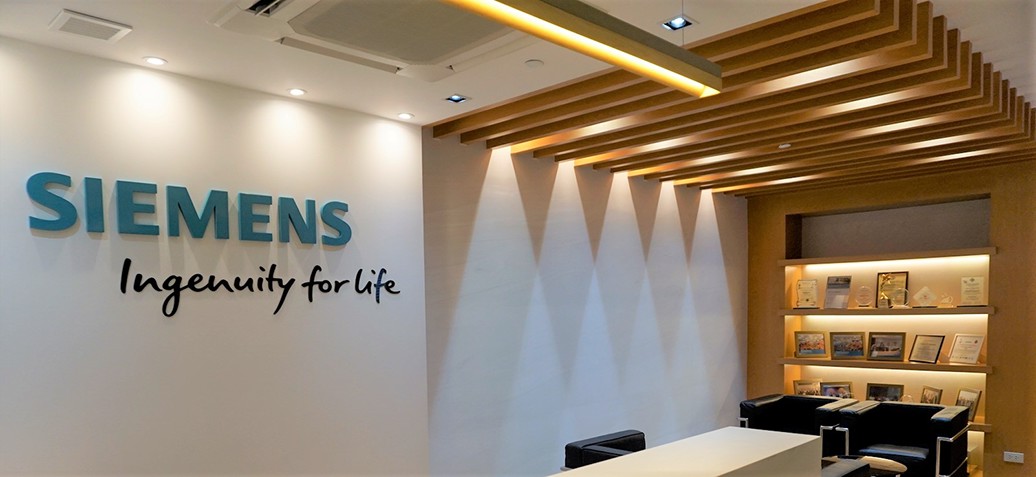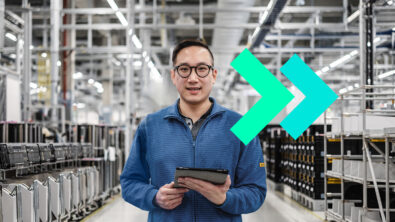COVID-19 and the future of manufacturing

As we have all been moving so quickly handling the many facets of this crisis, I finally took a few moments to reflect on the magnitude of it all. Sitting here in my basement office at my home, I have a few personal observations. First is, quite simply, people helping each other. Neighbors are helping neighbors they might not have even spoken to before. I have been so impressed with the sense of community, the willingness to take a step back and care for each other, evaluating the situation of others and accommodating their needs. That overarching momentum of collaboration, I believe, is impacting the reaction of businesses, not only internally with their team members, but also across the global supply chain.
I believe this entire experience is changing our collective mindset, and that will have a lasting impact on all industries. More collaborative working scenarios, more flexibility. If we look at how that influences our work in manufacturing, we might project how the specialization of the bits and pieces of the value chain may change. I don’t know now, but extreme trends in collaboration, such as crowdsourcing, will change how we build, how we design, how we cross-pollinate specialist ideas and blur our functional boundaries. While catalyzed in this most challenging environment, those are positive outcomes that will accelerate innovation in the future. And that is a good thing.
The immediate impact on the manufacturing industry really depends on the sector. Overall, the odd effects we’ve seen in buying behavior and consumer reactions are profoundly disrupting manufacturing planning. Production is either shutting down or rapidly accelerating – there’s little in between. That has a ripple effect across the supply chain.
Generally, and in our own factories, we are seeing an obvious reduction in demand. In Germany specifically, the auto industry is a major player. Car manufacturers are shutting down factories for weeks. I just had to have my tires changed, and when I called to see if the dealership was open, they said only the repair shop. They had stopped selling new cars entirely. Quite surprising, really, but also kind of logical when considering where current personal priorities are lying.
Of course, if we look at the Medical Device industry, production has ramped up, and manufacturers are struggling to keep pace not only with the increased volume, but in some cases with changes to the mix of products they need to deliver. This is really hard. In MedDev, where there is strict regulation, you can’t change course and deploy things overnight. Even where we have manufacturing systems in use, with high visibility and digitalized processes, switching from producing surgical gloves to something totally different is easier said than done. One MedDev manufacturer, for example, is retooling to increase the capacity for critical protective equipment. Retooling is a bigger challenge than people might expect. It’s highly complex – and we don’t need 5 masks a day, we need millions! Production facilities are highly optimized for the set of products they manufacture, built to deliver the highest quality at extreme efficiency. Now this manufacturer is looking at products that are completely different than what their production lines are optimized for.
Other shifts we are seeing include customers in the alcoholic beverage industry mass producing hand sanitizers, requiring rapid adjustments to recipes and new use of existing mixers and blenders. We are seeing manufacturers with 3D printing capabilities filling the supply gap for critical PPE items. Siemens has actually enabled a service to print parts on demand.
As a manufacturing guy myself, I know how hard it is to retool for a completely different product. It takes time – not only to actually produce the product, but to produce it efficiently, and with the right quality standards. We must be mindful and realistic. Right now, we don’t have “wartime mandates” in Europe. Regardless, you can mandate as much as you want, but manufacturers have to pull it off. That is a huge challenge that we must look at. Manufacturers are reacting to medical necessities without mandates, but it is still not something they can do in a week.
I’d say the biggest element I see in any manufacturer’s ability to perform under these circumstances is size. The more local and very small to medium-sized manufacturers with predominantly local supply chains have been the least equipped to deal with this. Their supply chain was in many cases cut off “overnight,” and they had no plans or alternatives in place. It has been quite catastrophic for them. Larger companies have a totally different level of preparedness and alternatives from a supply chain perspective. They also have the resources to create disaster plans. Here at Siemens, for example, we have full-time roles focused exclusively on disaster planning.
So, what about the future of the industry? Well, nobody was prepared for this. We had lessons learned from the global financial crisis in 2007/2008, and more lessons from the Fukushima nuclear disaster in 2011. But those disruptions were both quite different from what we are seeing from COVID-19. The abruptness (unlike the financial crisis) and the ubiquity (unlike the Fukushima incident) of this pandemic have created a perfect storm, so to speak. The bottom has fallen out of market demand globally, while supply chains are being disrupted on every continent.
As we ramp back up, manufacturers will rethink how they have organized their processes, their supply chains, the critical gaps they have in their digital infrastructure. There will be a lasting urgency around cost and margin pressure. I also expect that digital transformation efforts will drastically accelerate to create a nimbler manufacturing enterprise that can respond to market changes with more speed and flexibility.
What can manufacturers be doing today? Well, we have a forced time right now that we can use to reflect on strategic priorities without the normal tactical pressure of market demand. While we are in a terrible situation, we must look at available opportunities and leverage the time to our advantage. As different as the onset of this pandemic has been from other disasters, so too will the recovery be different. I expect the ramp up to be rather fast as we taper off lock downs, but the ramp up will have a clean-up period as we reassemble our businesses.
Taking the time to prepare not only for the ramp up, but for the future of their enterprises, is time well spent. The reality is – now even more obvious than before – manufacturers must digitalize their processes. If manufacturers weren’t embracing this before the pandemic, they must now. Digital transformation is a competitive imperative, and sometimes an existential imperative.
The gaps we are seeing where manual processes are breaking down, exacerbated by remote working, will be prioritized as digitalization opportunities. This isn’t something that is done overnight. Applying manufacturing-level systems is a challenging rollout activity. Getting visibility and transparency is a quicker endeavor, and often what we suggest as a first step for a manufacturer charting their digital transformation roadmap. From there, they can begin to prioritize the automation of processes, including supply chain constraints, traceability and quality management, shop-floor control and enforcement, and finally a complete digital manufacturing infrastructure that connects design and planning to production.
If we look at smaller businesses, cash is an enormous factor. Immediately, those manufacturers should take full advantage of the programs and support available from respective governments. They have to react to the reality of current demands. They can’t remain open and idle. They should ramp down to a level they can sustain and prepare for the ramp up. As things rebound very quickly, they should be thinking about how quickly they can ramp up. Take this as an opportunity in idle time – how can you optimize your processes and equipment? Where can you make quick investments? Transparency on the shop floor is an obvious and natural first step. IoT, pieces of MES systems – these are obvious steps to get a higher level of transparency. Embark on an automation journey. Be better equipped, as some of the larger companies have been.
In addition, manufacturers will have to make friends with different sources. Second sources from a different place on the planet will require new supply chain planning. They should be looking at modernizing tools, technologies, and processes that motivate the next generation of workforce, new business models that include technology partnerships, and a digital infrastructure that supports increased ability and business efficiency.
Beyond that, the digital processes related to remote working will be rethought. While sometimes the digital infrastructure of the internet is being heavily strained with a huge increase in bandwidth use, I have been amazed to see the processes that have been quickly created to deal with a remote workforce. Within our own company, as we have been forced to work from home to protect everybody, I have been impressed and positively surprised at the speed with which we have switched to a virtual environment – daily stand up meetings, video calls and virtual meetings, real-time messaging platforms across teams – really many completely different dynamics than we have supported previously. Yet they are working quite effectively. People are getting into a rhythm they didn’t expect, in some ways creating efficiencies we didn’t know we could achieve. Certainly, the reduction in travel has shown us how to effectively rely on the available alternatives. I am not suggesting that in-person meetings are not superior in many circumstances, but we will be rethinking what those circumstances really are.
Here at Siemens, like most businesses, our highest priority is the support of our customers and our employees. We are giving our employees maximum flexibility, not only to work from home, but also increased flexibility on work hours. The flexibility is critical as employees are dealing with their various personal situations. We want to keep everyone employed while taking into consideration that we need to ensure the continuity of our business. We are sitting in the same boat as our customers – safeguarding our employees and preparing for the ramp up that will occur. We are keeping our roadmaps as constant as we can, with our R&D teams up and running all week. Our leadership team is creatively looking at how to get the most value out of this situation, so we can come out of this faster and stronger than before. I am convinced we will do that.
In closing, my view is that this is all about staying positive. Even though things are hard, we have to look for hidden opportunities, unexpected gifts. For example, I am spending more time with my family. We have lunch together every day – a new ritual. My kids are 10 and 13, and having lunch together is a treat – usually I travel the majority of the week. You have to make the best out of the situation, embrace and enjoy what the situation has to offer. If I take energy out of the blessings newly presented, I can put that energy back into my work. Who knows – I might come up with some brilliant ideas I hadn’t thought of before. Perhaps others will, too.
Rene Wolf, Senior Vice President Manufacturing Operations Management Software at Siemens Digital Industries Software


